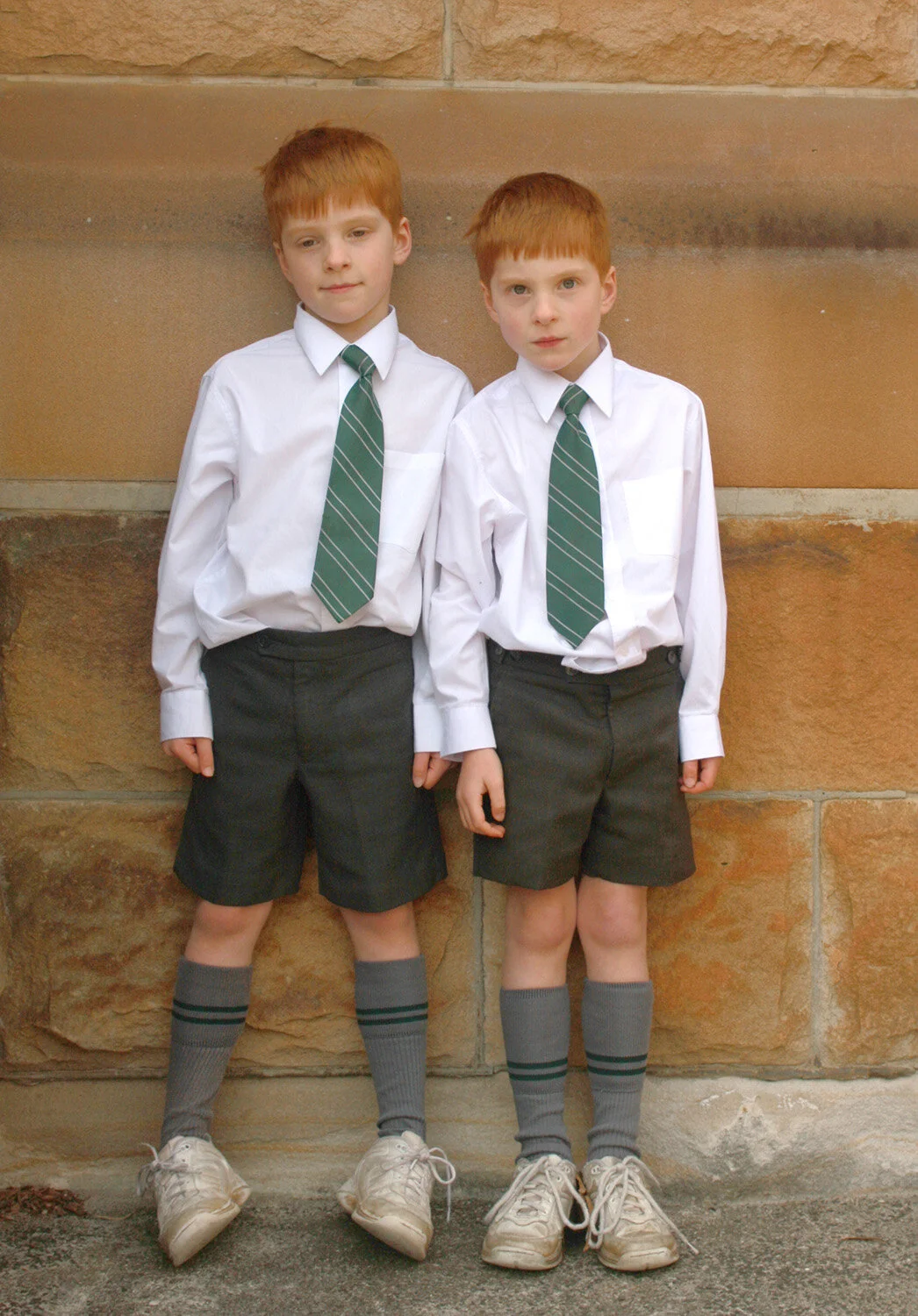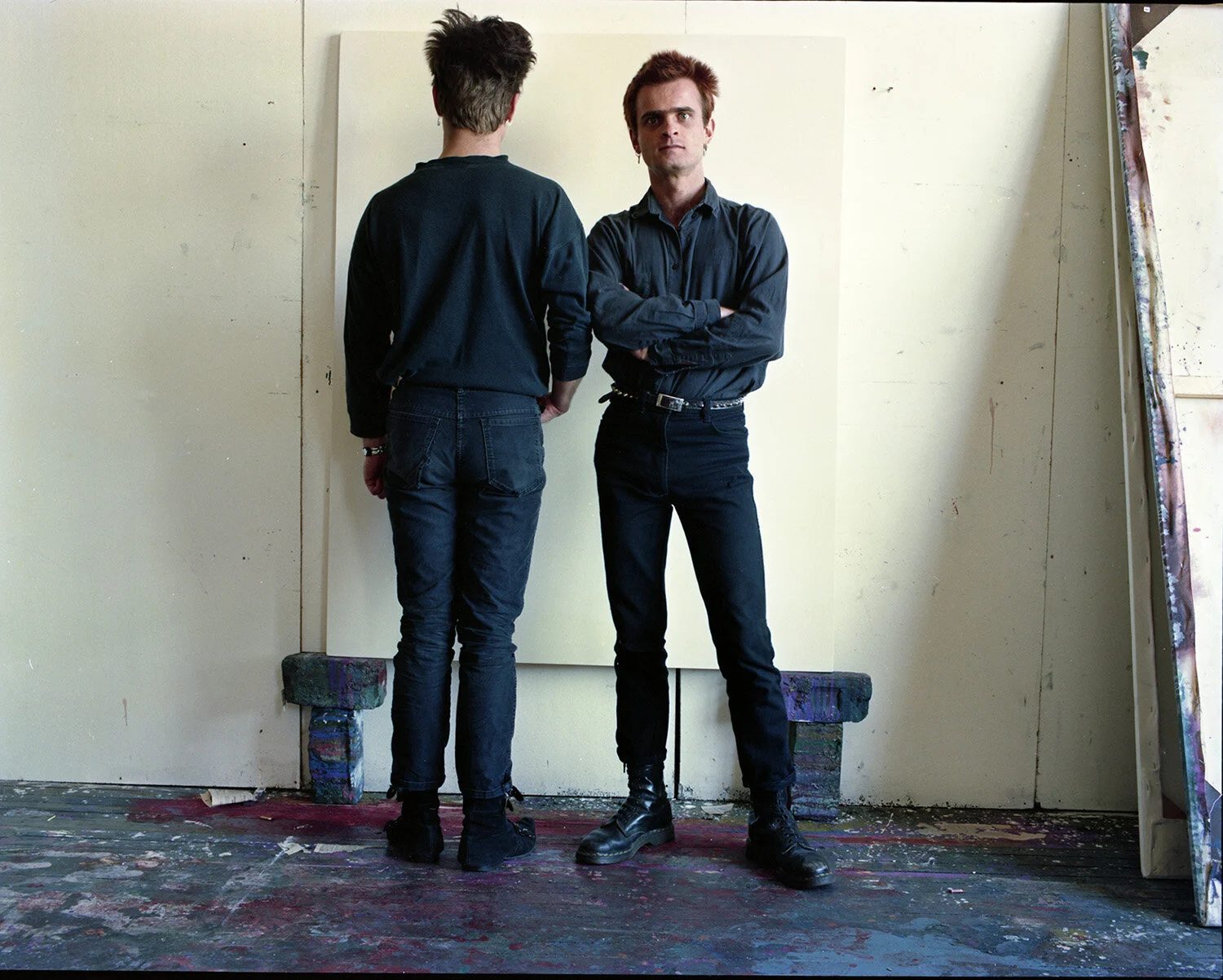Doubletake II
Suellen Symons first experienced twins at school where she had twin and triplet friends. The impression was a lasting one. Her first exhibitions portraying them were in 1984 (Images Gallery) and 1985 (Mori Gallery). She has photographed hundreds of pairs of twins in Australia and New York where she was an artist in residence at the Australia Council Greene Street studio being one of a few Australian artists given access by Polaroid to their large format camera. She advertised in the Village Voice for twins and produced a sumptuous series of costumed yin and yang entwined pairs on the rich grainless 20” x 24” prints of Polaroid (New York Series, 1988).
In 2009 she completed her Masters of Visual Arts at Sydney College of the Arts on the science of how twins are formed and the philosophy of the Double, and interviewed and photographed fifty sets of twins between 2004 and 2008. She identified the difference between monozygotic (identical) and dizygotic (fraternal) twins. Monozygotic twins share their entire DNA whereas dizygotic twins only share 50%.
In March this year she travelled to the Twins Plus Festival in Melbourne, unable to let go of her longtime obsession with chasing the double. The result of this is Doubletake 2. Suellen has photographed 69 sets of twins so far in 2012.
Having observed Suellen’s photographic love affair for many years I am provoked to think about her fascination with identicality. In her thesis she says ‘Twin denotes both union and separation, joining and parting.’ The definition of identicality is ‘the state of being as similar as something else to the point of being equal’. Being a twin provides a clearly defined relationship. In what other circumstance are we so clearly linked visually to another human being? Identicality can cause confusion in regards to identity. In these images twins are willing to dress and present themselves as identical. They identify as being a twin.
Photographs give us the opportunity to stare, to gaze unimpeded by politeness and in nearly all these photographs it becomes apparent there is not identicality, rather very small differences that may be expressive of personality differences. Thence there is difference within sameness. This is the enigma at the core of these uncanny and mesmerising images.
Most of us cannot imagine the experience of having a double. We are able to move through life as an individual (something which is socially encouraged) and to fully express ourselves through hairstyles and clothing and our interests. These twin siblings celebrate their sameness by fully embracing the experience of being a twin.
In Doubletake 2 Suellen has only depicted girls and young women despite a broad archive of men and women of all ages. An ongoing focus in all her work is girls at the age they develop into women and then find their identity. In these images we see young girls (Natalia and Georgia Hristidis) who appear fresh and unformed, their lives yet to unfold, and others at later stages of self-awareness (Alisha and Natasha Pearce).
We experience a touching poignancy and a deep sense of what it is to be human as we meet the gaze of these young identical beings. Perhaps what is so fascinating about these twins is that they represent a developmental stage of life that we all share, a stage of individuation, of unformed freshness of self and yet simultaneously an experience of being connected to others.
Sandy Edwards April 2012
Postcard from exhibition at Chauvel Cinema Archetype Gallery












